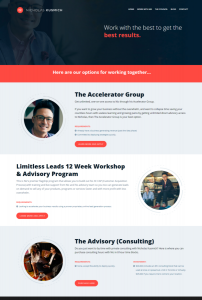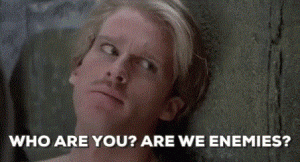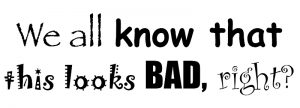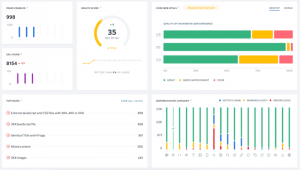— December 23, 2018

TeroVesalainen / Pixabay
Stepping out the door, you glance across the parking lot in the general direction of your car. A quick check of the time shows 2:27 p.m. You need to be on the road by 2:30 to reach your destination on time. You’ve got 3 minutes to make it to the car and get going. A few minutes later, right at 2:30, you slip into your driver’s seat. This may be the least interesting part of your day, but it’s a pretty good metaphor for management.
Your walk begins with a command from the top. Your own personal executive office—your conscious mind—makes the decision to arrive at the car in 3 minutes. This comes down your chain of command as direction and pace: an approximation of where you think the car is and how fast you should walk.
From there, the individual contributors in your personal organization—your feet—act accordingly. They begin moving you toward your approximate destination, even though you don’t exactly know where it is. But this is no trivial process, no “Yes, sir,” one-and-done. The musculature in your feet and lower legs adjust on demand to variations in surface, slope, and the like as you go. Yet, no calls are made seeking permission to vary the process within given parameters. Workers work, and motion happens with a minimum of stumbling or chatter.
Calls may be made, however, for more resources. If the pace is too fast or the surface too difficult, the muscles will need more oxygen in the blood, and the request will be raised through the nervous system. Small changes get handled automatically in the “middle” of your organization where your circulatory and respiratory systems accelerate imperceptibly. Greater needs are escalated all the way to the top, where you’re presented with a conscious decision: breathe harder or walk slower. Up in your “executive office,” you don’t argue the data or demand more PowerPoint® slides. You just decide.
That’s not to say the system is driven only from the bottom. At the top, you’re doing what good executives do: watching what’s coming. As you walk, you notice environmental items that warrant a response, like an open manhole or a shortcut between parked cars. As you get closer, you also see your car in sight—or see that it’s not where you expected it. Your executive office sends that information downward, where your feet—your frontline workers—adjust accordingly.
Along you go, information flowing down from above and up from below, course corrections and resource adjustments happening along the way, and all of the elements of the system—that’s a key word, system—are working in concert for one purpose: so that every step you take is the next most logical one from where you are, given everything you’ve learned getting there.
If your timely arrival to your vehicle isn’t all that exciting, consider for a moment what doesn’t happen:
- You don’t find yourself paralyzed mid-parking lot as your feet await permission from your brain or circulatory system to take the next step after stepping on a piece of gravel that wasn’t in the original plan.
- You don’t see an open manhole from 40 paces away, and with increasing agitation issue futile commands to adjust course only to fall down the hole while consultants cluck about how you failed to practice change management correctly.
- You don’t arrive with surprise at the wrong car just because it was in your original plan of record and you were unable to change course or arrive at your own car 50-percent to 200-percent later than expected.
- You don’t run out of blood oxygen midway to the car because of a mismatch between what your muscles needed and what your circulatory and respiratory systems provided.
- You don’t roam endlessly around the parking lot, vacillating between continuing to the car and returning to the building, mired in muddled, conflicting information as to how long the walk is actually going to take.
Any of these outcomes would be, well, dumb. They don’t happen as you walk, but they do happen in organizations. Micromanagement stalls progress. Lack of flexibility makes easy-to-foresee problems impossible to avoid. Plans and budgets underestimate complexity and cost. Resources are held hostage by cumbersome approval processes. Bad information from above and below pollutes decision-making at every level.
A group of intelligent people can produce a result that’s better than any an individual would have produced alone. An organization can produce results far beyond what its members could have done individually. Or, that same group can function to eliminate the wisdom from the process, producing a result that every single member privately recognizes as flawed, suboptimal or, to put it in simple terms, dumb.
The difference lies in the extent to which new information moves between levels, intelligent decisions are made based on that information, and activity is adjusted accordingly. Only when every step leads to more information, and every bit of information informs the next step, is the entire organization optimized. That’s what it means to Iterate.
To Iterate is the core function of management. It’s different than managing individuals— doing things like giving performance feedback and coaching employees. And, it’s different than change management—doing things like finding executive sponsors and creating a burning platform. Pure management is the only function that helps your organization to respond intelligently to the overwhelming amount of new information it faces every day.
Is your management making your organization dumber or smarter? That depends on whether it’s helping the organization to Iterate or keeping it from doing so.
Group Harmonics, Inc., claims the exclusive right to use “Iterate,” “Iterative Management,” and the family of “Iterative” marks in connection with business consulting goods and services.
Previously published in HR Daily Advisor.
Business & Finance Articles on Business 2 Community
(71)
Report Post





